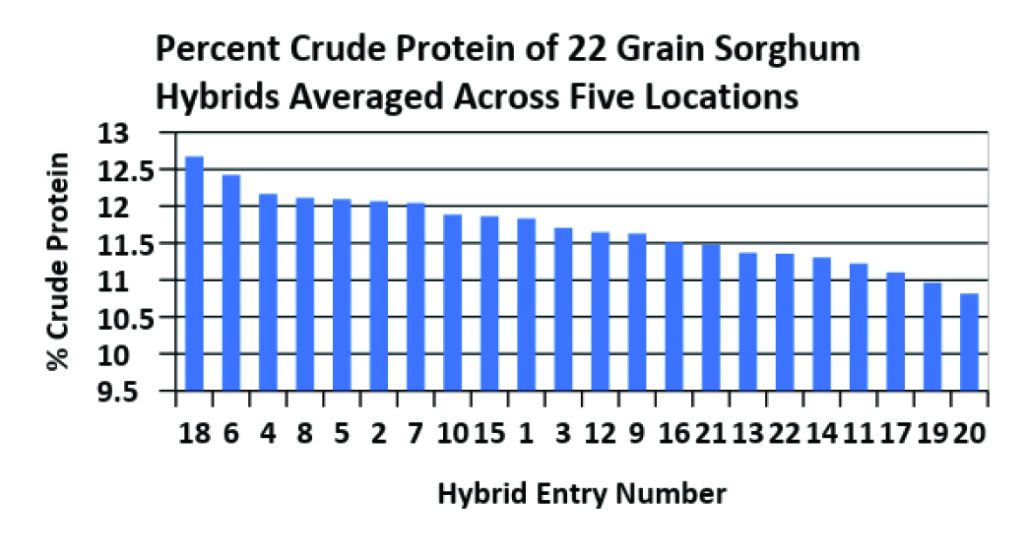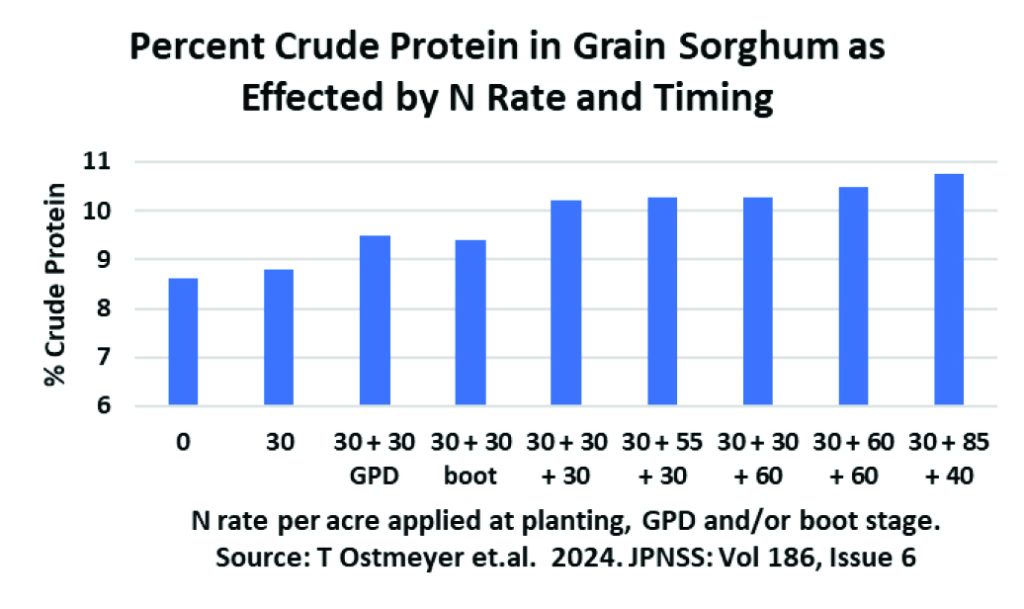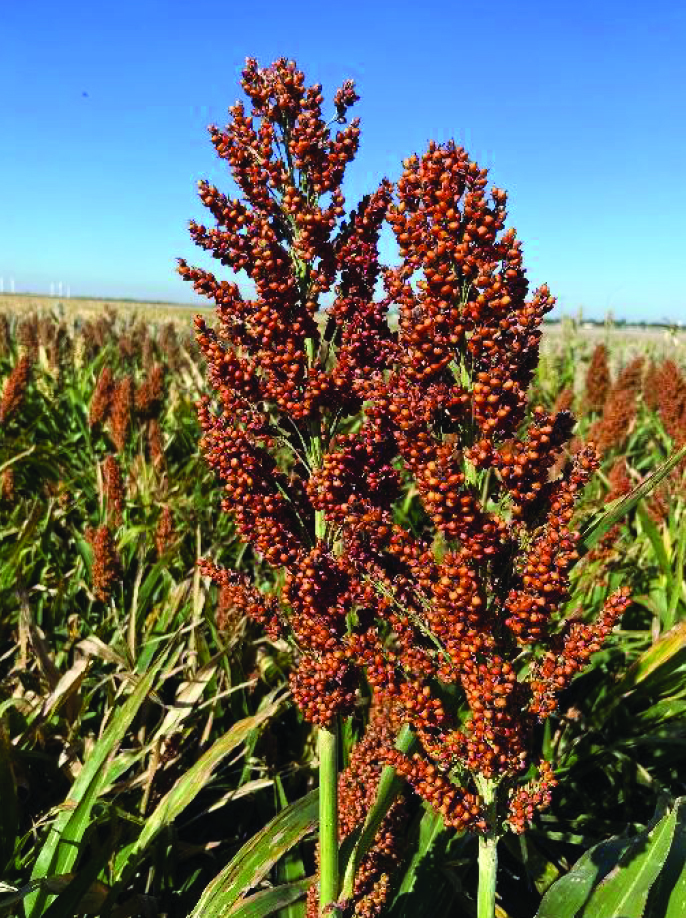As an agronomist, I seldom give a presentation without discussing soil fertility and how it impacts yield. Of the essential nutrients required by sorghum, the most discussed is nitrogen.
A common recommendation is to apply 1.12 pounds of nitrogen per acre for every bushel of expected yield minus any soil residual nitrogen or organic matter credits. However, the effect of nitrogen rate and application timing on grain protein is seldom discussed. Grain sorghum end users are asking for the grain to express specific traits, including the highly sought-after trait of increased protein.
The overall environment where the crop is being grown affects grain protein content. Two of the main factors that play a role in grain protein content are the particular hybrid being grown and the availability of adequate soil nitrogen.
A recent study conducted by the United Sorghum Checkoff Program compared 22 of the most commonly grown hybrids in the United States for grain composition traits. These hybrids were planted at five locations from south Texas to Kansas. When averaged across locations, crude protein ranged from 10.8 to 12.7%, a difference of almost 2 percentage points, clearly indicating the importance of the choice of hybrid if higher crude protein is the goal.
Several studies over the years have shown the importance of having adequate soil nitrogen available for increasing crude protein content in grain sorghum. The amount of nitrogen available must go beyond what is needed for optimum grain yield. This was shown in a recently published field study conducted near Manhattan, Kansas.
In this study, under three different dryland environments, yield and crude protein were measured following treatments that included a zero check and eight treatments with varying nitrogen application timings and amounts. Yield was optimized when 30 pounds of nitrogen per acre were applied at planting followed by a second application of 30 pounds at either growing point differentiation (30 to 40 days after emergence) or at the boot stage for a total of 60 pounds of nitrogen. However, to maximize the amount of crude protein required a total of 90 pounds of nitrogen with 30 pounds applied at planting, at GPD and again at the boot stage.
In summary, if high crude protein grain sorghum is desired, first choose a hybrid that is higher in average crude protein compared to other hybrids. Second, apply an additional 30 pounds of nitrogen beyond what is required to produce the expected grain yield.


Editor’s note: Brent Bean, Ph.D., is the Sorghum Checkoff director of agronomy, Lubbock, Texas. For more information visit www.sorghumcheckoff.com.




